Expert’s Rating
Pros
- Great switches and stabilizers
- Tons of Fn layer tools
- Hot-swap sockets
Cons
- Expensive
- No programming software
- ABS keycaps
Our Verdict
Cherry’s new pre-lubed switches are great…if only the keyboard they were in was as good. You’d be better off buying them on their own and installing them in a more customizable board than dealing with the KV52’s high price tag.
Price When Reviewed
$139
Best Prices Today: Cherry K5V2 keyboard
$129.99
Cherry is a name that’s inseparable from mechanical keyboards. The German company’s MX switch design is basically the foundation of the modern keyboard industry. But while Cherry’s keyboards from the ’80s and ’90s have a certain cachet, today the company is mainly known as a parts supplier to other keyboard manufacturers.
But Cherry is still making keyboards, at least as much to show off its latest switch designs as to sell products in their own right. Enter the K5V2 RGB Compact, a refreshed 65% design boasting Cherry’s newest MX2A Red switches. These switches and some other parts are indeed lovely, but the keyboard’s high price and lack of software customization keep it from getting an easy recommendation.
Further reading: See our roundup of the best gaming keyboards to learn about competing products.
Cherry K5V2 hardware and style
The K5V2 will look startlingly familiar to anyone who’s shopped for a gaming keyboard as of late. Its 65% layout adds a little extra width to a compact design in order to fit a Delete key and standard arrow cluster, while sacrificing only a shortened right Shift key in deviation from the ISO standard. It’s also showing off RGB lighting and a detachable braided USB-C cable.
The Cherry KV52’s high price and lack of software customization keep it from getting an easy recommendation.
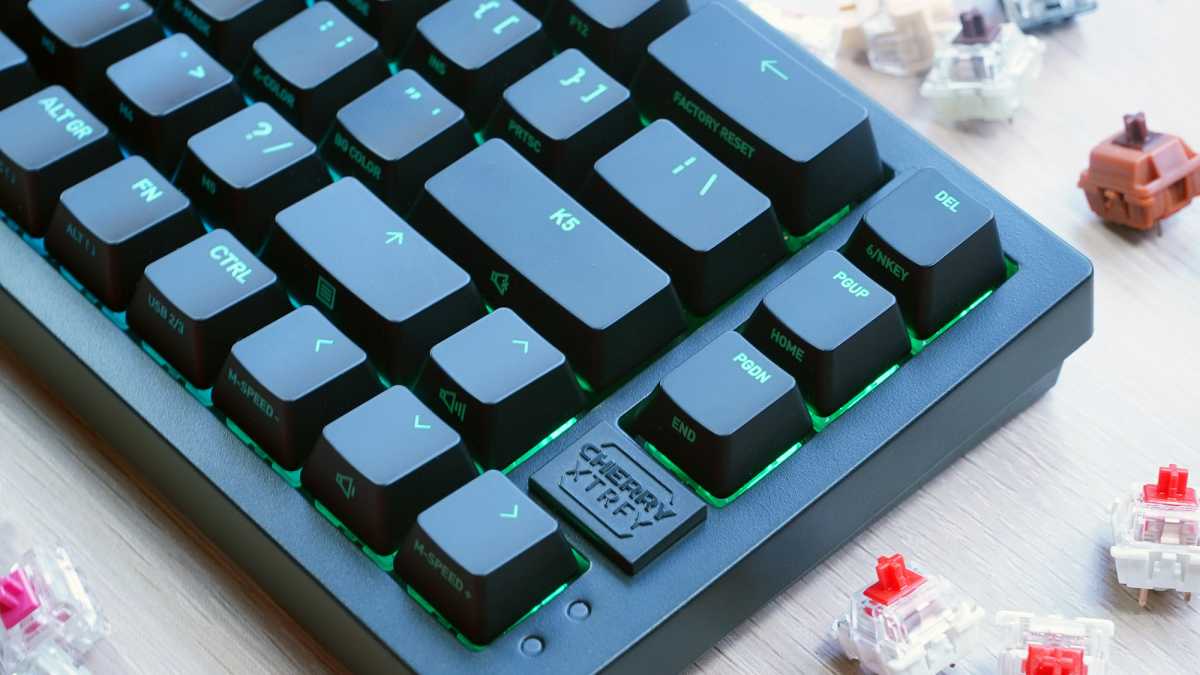
Michael Crider/Foundry
Underneath that exterior are a couple of surprises. In addition to those brand-spankin’-new MX2A switches, the stabilizers are noticeably smoother and quieter than usual. The switch sockets are also hot-swappable, something that’s quickly becoming a must-have feature…but not one I expected to see on a keyboard that’s so specific about the benefits of its new switches.
The keyboard has a few other features borrowed from both the “custom” keyboard world and gaming designs, like internal layers of sound dampening, N-key rollover, and “super-scan technology for instant response,” which I’m going to guess is a high (but unspecified) polling rate. Other than that, it’s a fairly usual design.
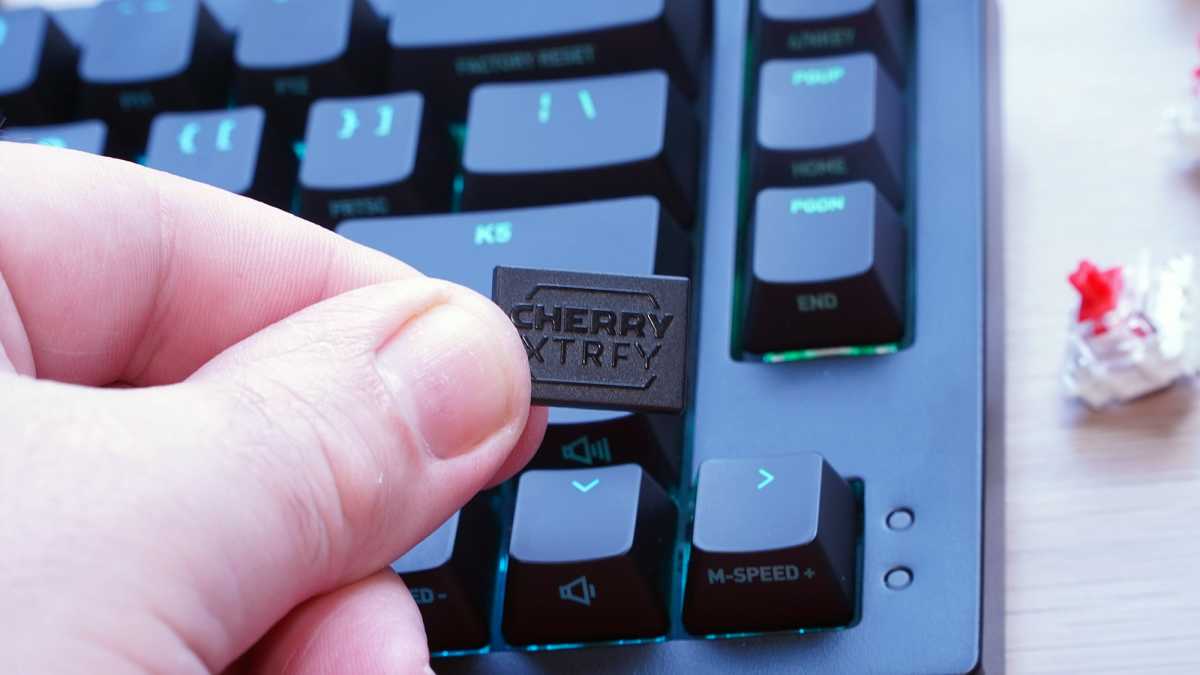
Michael Crider/Foundry
The keyboard’s plastic body and ABS keycaps aren’t all that impressive, especially for the price. While it’s solid enough, I found the single-stage feet on the bottom somewhat shallow. The last distinctive feature of the design is a plastic badge that sits just above the right arrow key. It’s unpainted with a “CHERRY XTRAFY” logo (the same an on the Windows key) raised in black, and it’s held in place with nothing but a magnet. There doesn’t seem to be any point to it besides decoration. Okie dokie then.
Software…or lack thereof
The first thing you notice when the keyboard lights up its fairly bright LEDs is that nearly every single key — save for the \ key above Enter — has a designated use on the function layer. There are keys that replicate mouse movement. There’s a key that lets you switch between USB 2.0 and USB 3.0 mode, though I don’t know why you’d want to. There’s a function key for launching the default Windows calculator, something I haven’t seen in a very long time.
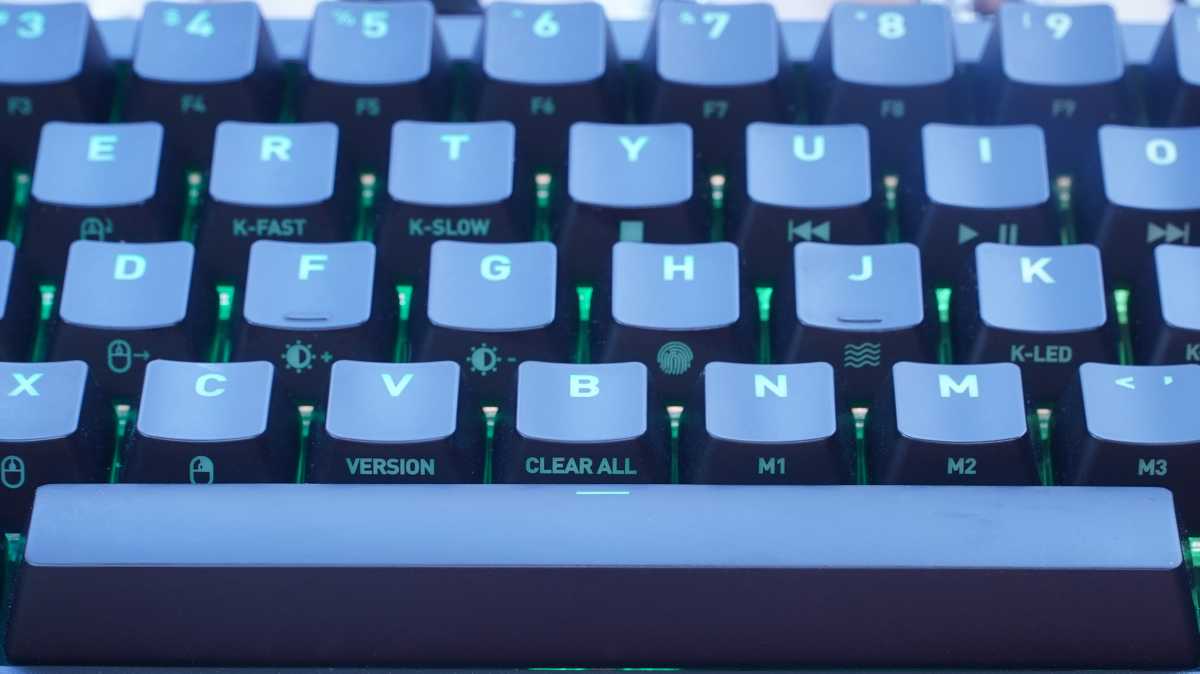
Michael Crider/Foundry
Why Cherry felt the need to include such an exhaustive list of functions on a keyboard that seems to be aimed at gamers, I couldn’t guess. Until I looked for the programming software…and didn’t find any. You’d better be satisfied with hardware customization, because that’s the only kind on offer with the K5V2.
How is the typing and gaming on the Cherry K5V2?
Perhaps feeling a bit left behind by competition that’s been copying and improving its out-of-patent MX design for years, Cherry made a big press push for the MX2A switches. But to give credit where it’s due, they’re darn good. The pre-lubricated linear design with 45 newtons of operating makes each key press smooth from the top of the actuation to the bottom. And with an outer casing identical to the original design, it’s compatible with hot-swap switch sockets in millions of keyboards. Nice.
But it’s the stabilizers that really steal the show here. Other keyboard manufacturers tend to overlook the pieces that give extra stability to long keys like Space, Shift, and Enter. Not so for the K5V2. These keys get an extra “thocky” sound without any of the wobbliness or rattling that’s seen in the competition, even some of the best out there like Keychron’s Q series.
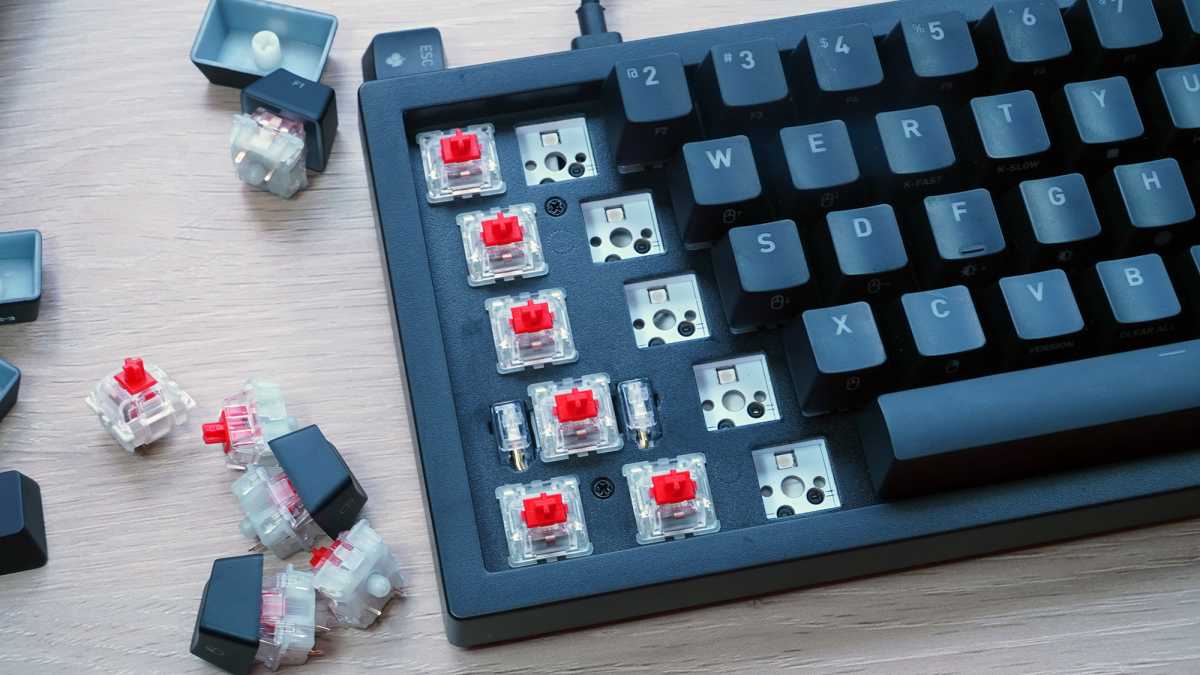
Michael Crider/Foundry
All of these components combine to make typing fast, light, and smooth. Ditto for gaming, though I kind of wish something with a stiffer spring was offered…which I can certainly do: Just track down the MX2A Black switches with a similar linear design and 60 Newtons of actuation force. Hot-swap to the rescue. Sadly, it looks like the K5V2 is only being offered with Red switches upon the initial launch, the most popular choice for gaming keyboards.
Is the Cherry K5V2 keyboard worth it?
All this adds up to a keyboard that’s pretty darn good, especially if you care about a solid typing and gaming experience. Unfortunately, it also adds up to a $139 USD sticker price. While the German company can certainly claim its heritage in asking for a premium, the cold, hard fact of the matter is that this keyboard is made in China, just like most of the competition. And the competition offers an awful lot more for the money.
All this adds up to a keyboard that’s pretty darn good…unfortunately it also adds up to a $139 price.
For example, pretty much any gaming keyboard over $100 (and many under) will offer software customization of some kind. While this is less necessary for a keyboard than a mouse, it’s still very much expected, and a shame that the bright LEDs in this keyboard are limited to built-in lighting patterns. The exhaustive and well-communicated sub-layer isn’t a good enough substitute.
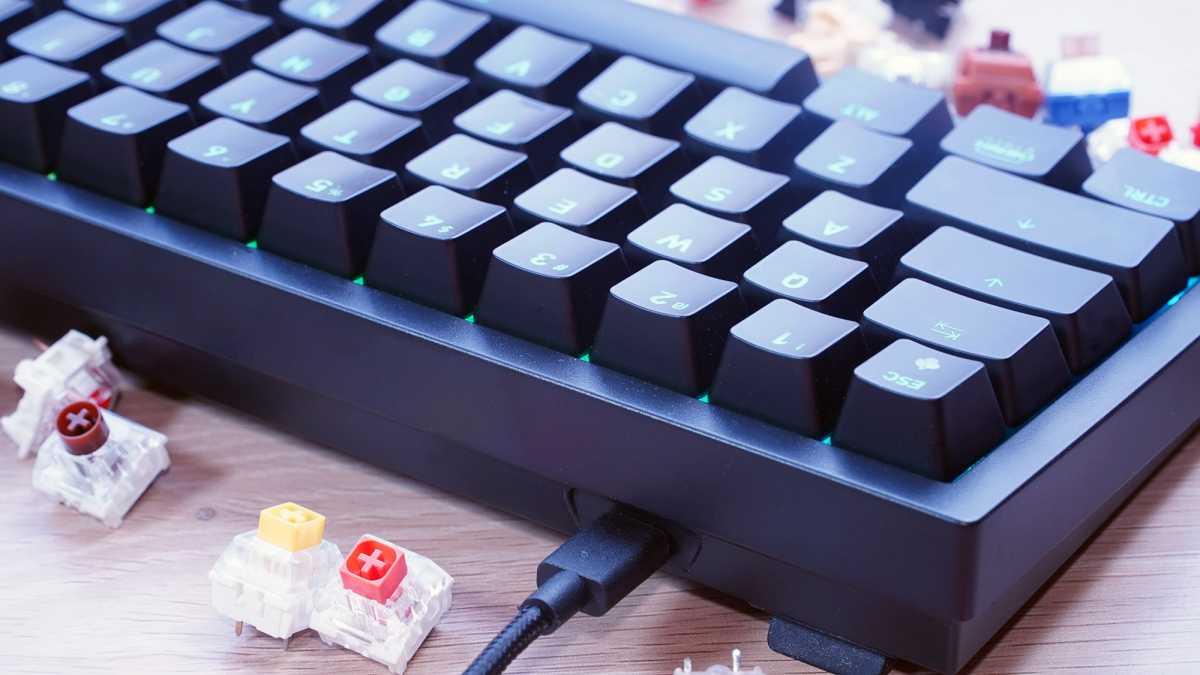
Michael Crider/Foundry
It doesn’t help that a couple of corners were cut for the K5V2. While the switch plate is metal and offers a bit of extra stiffness, it’s the only thing that is — the rest of the body is plastic. And the keycaps are ABS plastic, a slippery step down from the PBT plastic seen on most keyboards in this price range (with the notable exception of Razer).
In fact aside from those great switches and stabilizers, there isn’t a whole lot more in this keyboard than there is on the G.Skill KM250, one of our perennial budget favorites. And with the latter’s hot-swap capability, you could get a full replacement set of these MX2A switches (or any other premium switch you want) for less than the nearly $100 price difference. Ouch.
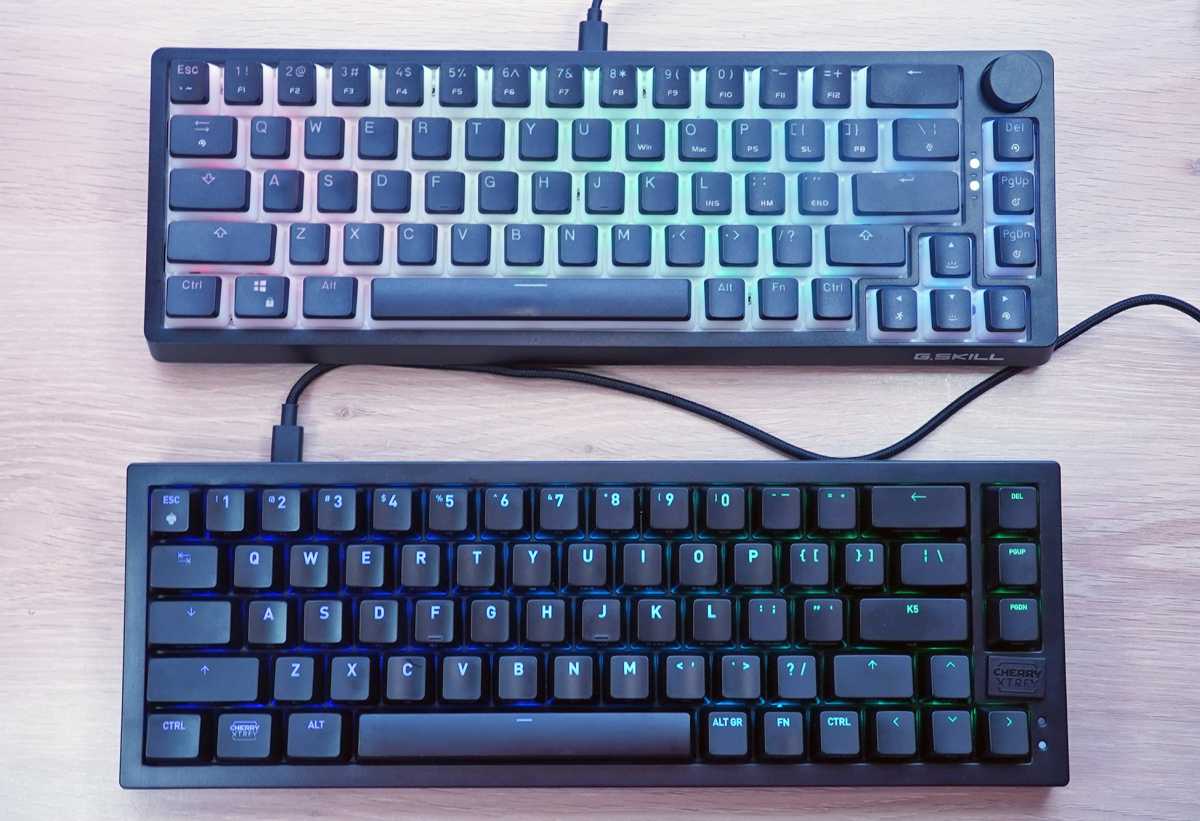
Michael Crider/Foundry
While the K5V2 is a perfectly serviceable keyboard with great typing and excellent stabilizers, “perfectly serviceable” just isn’t enough in the extremely competitive mechanical keyboard market. Cherry is leaning heavily on its pedigree, but its lack of software customization, sub-standard keycaps, and high price mean that it’s nowhere near the best in show.




